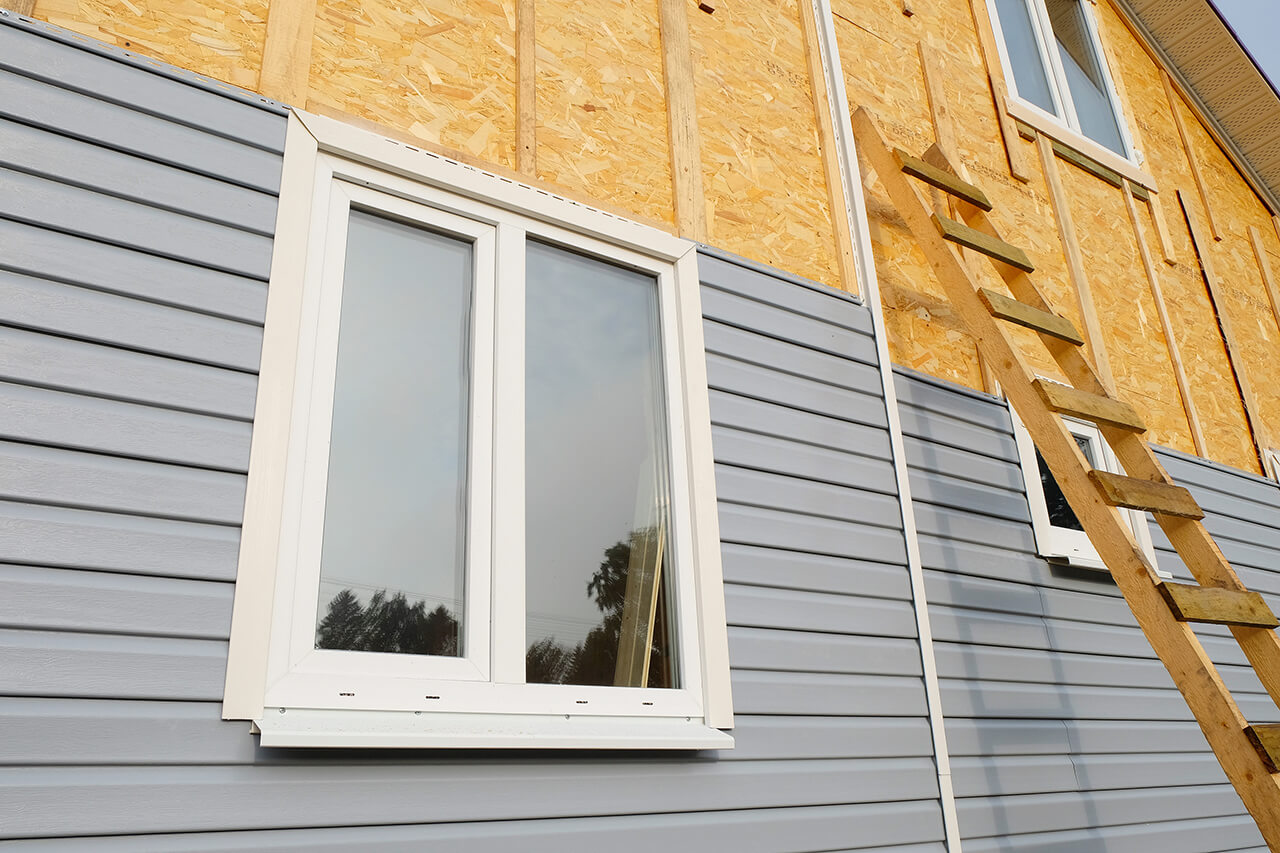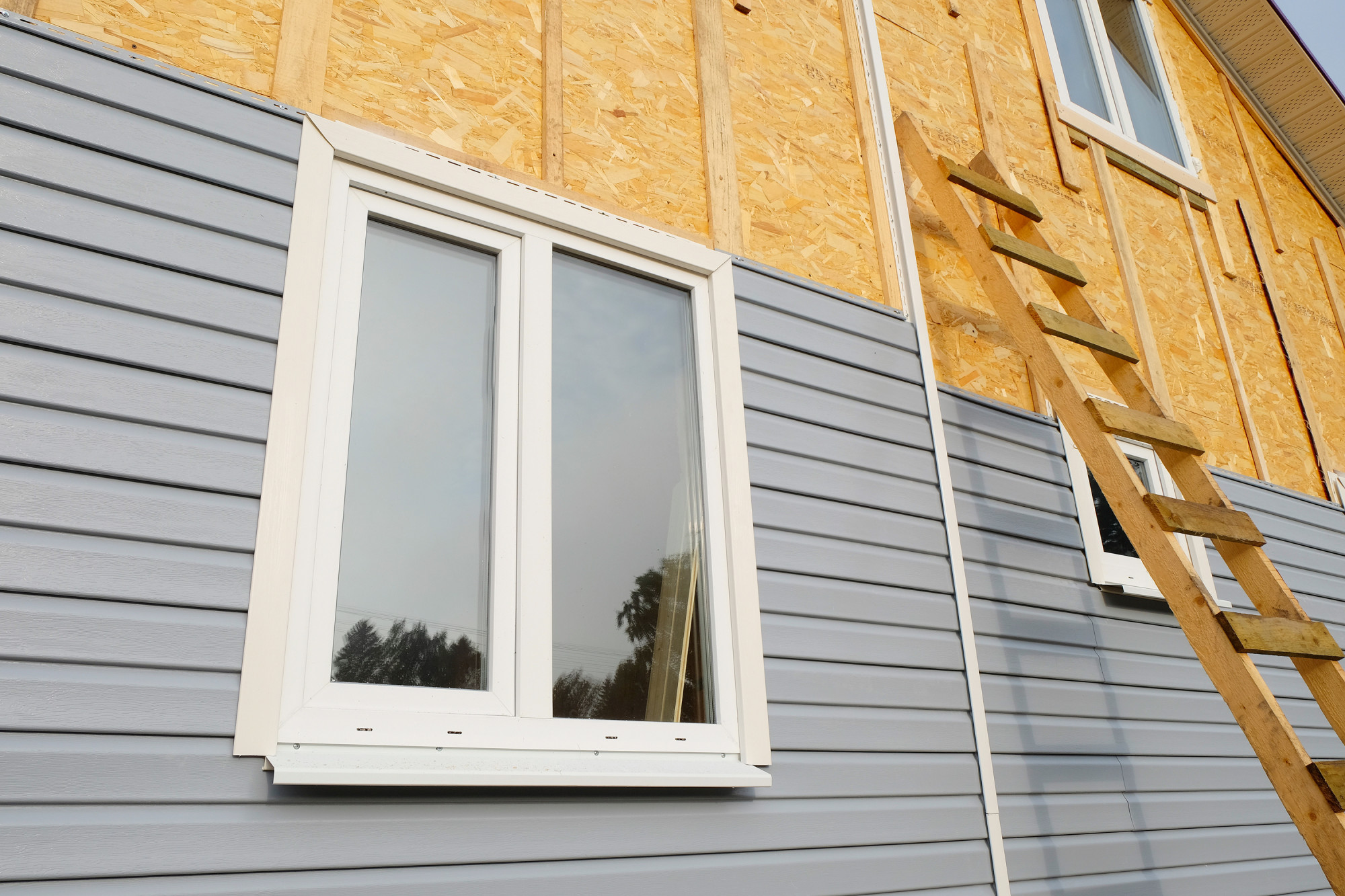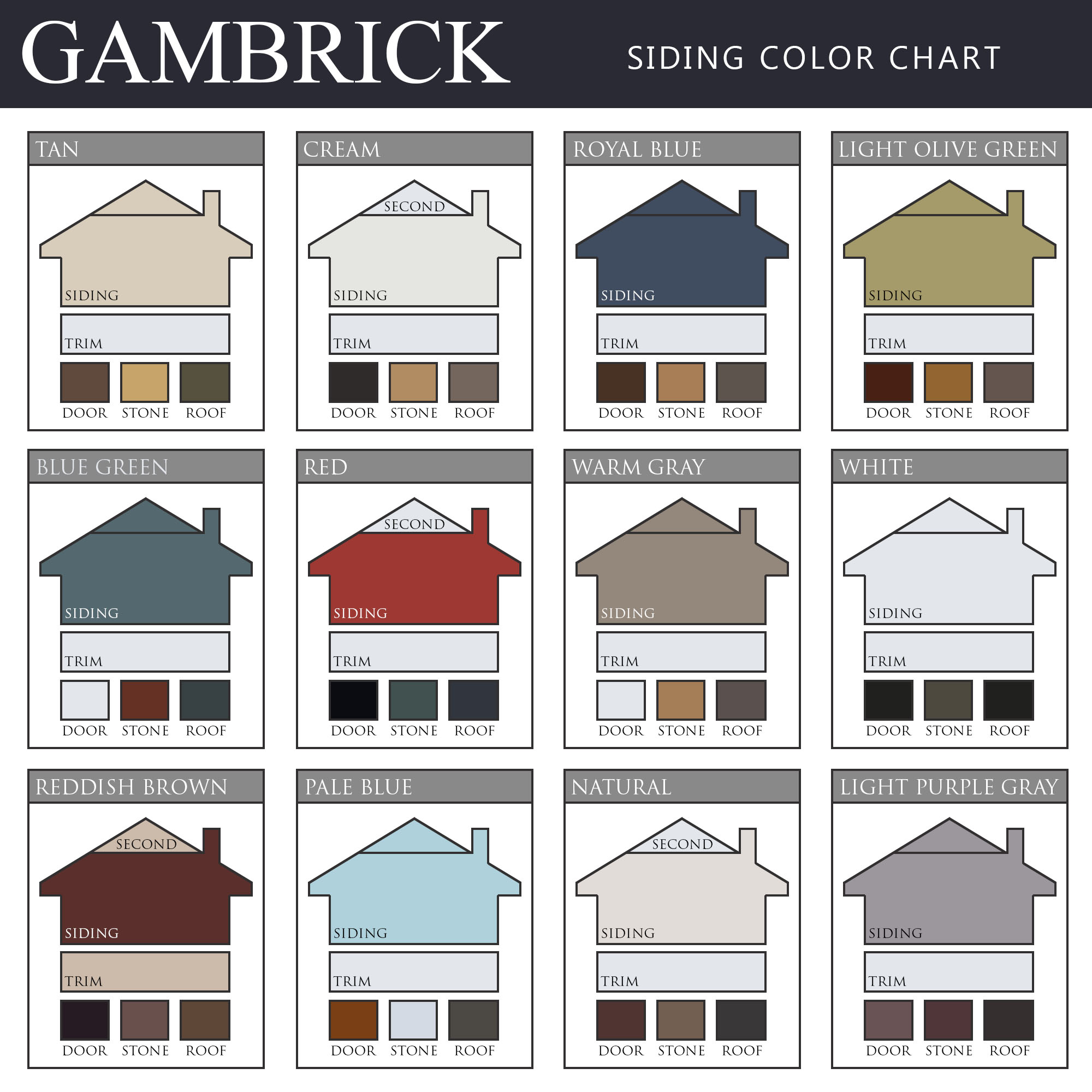Prevent Costly Damage: Siding Maintenance Tips

Prevent Costly Damage: Siding Maintenance Tips Every Homeowner Should Know. Your home’s siding is its first line of defense against the elements. Proactive maintenance not only protects your investment but also significantly extends its lifespan, saving you money on costly repairs or premature replacements down the line. Understanding your siding’s material, its specific needs, and implementing a regular maintenance schedule are crucial steps in preserving its beauty and functionality for years to come. This guide provides practical advice and actionable steps to help you keep your siding in top condition.
This comprehensive guide covers everything from regular inspections and cleaning to addressing minor damage, preventing water intrusion, and dealing with pest infestations. We’ll explore different siding materials, their unique maintenance requirements, and provide a seasonal checklist to ensure year-round protection. Learn when professional help is necessary and how to understand your siding warranty to maximize its value. By following these simple yet effective tips, you can safeguard your home’s exterior and avoid expensive surprises.
Introduction
Proactive siding maintenance is a crucial aspect of homeownership, often overlooked despite its significant long-term financial benefits. Regular inspections and timely repairs can prevent minor issues from escalating into costly replacements, saving homeowners substantial sums of money over the lifespan of their home. Ignoring siding maintenance, however, can lead to structural damage, reduced energy efficiency, and a diminished property value. Understanding the specific needs of your siding material is key to effective maintenance.
The financial advantages of preventative maintenance are undeniable. A small investment in regular cleaning and minor repairs can prevent the need for expensive replacements down the line. For example, addressing a small crack in vinyl siding promptly might cost a few dollars for sealant, whereas neglecting it could lead to water damage requiring the replacement of multiple siding panels, costing hundreds or even thousands of dollars. Similarly, addressing minor wood rot early can prevent the need for extensive repairs or complete board replacement.
Siding Materials and Their Maintenance Needs
Different siding materials require varying levels of maintenance. Understanding these differences is vital for effective upkeep.
- Vinyl Siding: Generally low-maintenance, vinyl siding benefits from regular cleaning with soap and water to remove dirt and debris. Occasional inspection for cracks or damage is also recommended. Severe damage might require panel replacement.
- Wood Siding: Wood siding demands more attention. It requires regular painting or staining to protect it from the elements and prevent rot. Careful inspection for signs of insect infestation, rot, or damage is crucial. Repairing damaged areas promptly is essential to prevent further deterioration.
- Fiber Cement Siding: Fiber cement siding is durable and relatively low-maintenance. Regular cleaning is recommended, and inspections for cracks or damage are important. While less prone to damage than wood, repairs are more involved and may require professional assistance.
- Aluminum Siding: Aluminum siding is known for its durability and resistance to weather damage. Regular cleaning is usually sufficient. However, dents or scratches should be addressed to prevent further deterioration and maintain the aesthetic appeal.
Consequences of Neglecting Siding Maintenance
Neglecting siding maintenance can result in a cascade of costly problems.
- Water Damage: Damaged siding allows water to penetrate the exterior walls, leading to mold growth, rot, and structural damage. This can necessitate expensive repairs involving drywall, insulation, and framing.
- Pest Infestation: Cracks and gaps in siding provide entry points for insects and rodents, leading to infestations that can compromise the structural integrity of the home and require professional pest control services.
- Reduced Energy Efficiency: Damaged siding compromises the home’s insulation, leading to higher energy bills and reduced comfort. Air leaks can increase heating and cooling costs significantly.
- Decreased Property Value: Damaged or poorly maintained siding significantly detracts from a home’s curb appeal and market value, impacting its resale price.
Regular Inspection and Cleaning
Regular inspection and cleaning of your siding is crucial for preventing costly repairs and maintaining your home’s curb appeal. Neglecting these tasks can lead to the accumulation of dirt, mold, and mildew, which can damage the siding material and compromise its protective qualities. Proactive maintenance significantly extends the lifespan of your siding and saves you money in the long run.
Siding Inspection for Damage
A thorough inspection should be conducted at least twice a year, in spring and fall. This allows you to catch small problems before they escalate into major, expensive issues. Start by visually examining your siding from ground level, paying close attention to areas most exposed to the elements. Then, use a ladder (following all safety precautions) to inspect higher areas.
- Check for Cracks: Carefully examine each panel for any hairline cracks or larger fractures. Pay particular attention to areas around windows and doors, where stress is often concentrated.
- Look for Holes: Inspect for holes caused by insects, rodents, or impact damage. Small holes can be indicative of larger problems beneath the surface.
- Assess Panel Security: Check for any loose or damaged panels. Gently try to wiggle panels; any movement suggests a need for repair or replacement.
- Examine Caulking and Sealants: Inspect caulking around windows, doors, and other penetrations. Cracked or missing caulk allows water intrusion, leading to rot and damage.
- Note discoloration or staining: Noticeable changes in color can indicate moisture damage or the growth of mold and mildew.
Common Siding Problems and Solutions
The following table outlines common siding problems, their causes, solutions, and preventative measures.
| Problem | Cause | Solution | Prevention |
|---|---|---|---|
| Cracked Siding | Impact damage, age, extreme temperature fluctuations | Repair or replace damaged sections. For minor cracks, use a high-quality caulk. For larger cracks, panel replacement may be necessary. | Regular inspections, protecting siding from impact, proper insulation to minimize temperature fluctuations. |
| Loose Siding | Improper installation, wind damage, settling foundation | Re-nail or replace loose panels. Address underlying issues like foundation problems. | Proper installation by a qualified contractor, regular inspections, and addressing foundation issues promptly. |
| Mold and Mildew | Moisture buildup, lack of cleaning | Clean siding with a suitable cleaning solution (see below). Address any moisture problems, such as leaky gutters or downspouts. | Regular cleaning, proper ventilation, and prompt repair of leaks. |
| Insect Infestation | Wood-boring insects | Treat infested areas with insecticide, repair or replace damaged sections. | Regular inspections, preventative insecticide treatments, proper ventilation. |
| Water Damage | Cracked caulking, damaged flashing, clogged gutters | Repair or replace damaged components, ensure proper water drainage. | Regular inspections and maintenance of caulking, flashing, and gutters. |
Siding Cleaning Methods
Cleaning methods vary depending on the siding material. Always test any cleaning solution on a small, inconspicuous area first to ensure it doesn’t damage the siding.
Vinyl Siding: A mixture of mild detergent and water, applied with a soft-bristled brush, is usually sufficient. Rinse thoroughly with a garden hose. Avoid using high-pressure washers, as they can damage the siding. For stubborn stains, a solution of bleach and water (always following manufacturer’s instructions and safety precautions) may be necessary.
Wood Siding: Use a cleaner specifically designed for wood siding. Follow the manufacturer’s instructions carefully. Power washing can be used cautiously, but ensure the pressure is low enough to avoid damaging the wood. Regular cleaning and sealing will help protect wood siding from the elements.
Fiber Cement Siding: Fiber cement siding is relatively low-maintenance. Regular cleaning with a soft brush and mild detergent is usually sufficient. Avoid harsh chemicals and high-pressure washing, as they can damage the surface.
Important Safety Note: When cleaning siding, always wear appropriate safety gear, including gloves and eye protection. If working at heights, use a sturdy ladder and follow all safety precautions.
Debris Removal Around Siding
Removing debris, such as leaves, branches, and other organic matter, from around your siding is essential for preventing moisture buildup and pest infestations. This debris can retain moisture, creating ideal conditions for mold and mildew growth. Regularly clean gutters and downspouts to ensure proper water drainage away from your home. Keeping the area around your foundation clear of vegetation also helps prevent moisture problems.
Addressing Minor Damage
Prompt attention to minor siding damage prevents escalation into more costly repairs. Ignoring small problems can lead to significant water intrusion, structural damage, and a complete siding replacement down the line. Addressing these issues proactively is a cost-effective way to maintain your home’s curb appeal and structural integrity.
Addressing minor siding damage involves identifying the problem, selecting the appropriate repair method, and executing the repair correctly. Common minor issues include small cracks, holes, loose or damaged caulking, and gaps between siding panels.
Repairing Small Cracks and Holes
Small cracks and holes in vinyl or fiber cement siding can often be repaired with a high-quality exterior-grade caulk designed for siding. For larger holes or more significant damage, patching materials might be necessary. The selection of repair material depends on the siding material and the size of the damage. For example, a small crack in vinyl siding might be easily filled with a vinyl-compatible caulk, while a larger hole in wood siding may require wood filler and paint.
Before applying any repair material, ensure the area is clean and dry. For cracks, apply the caulk smoothly, ensuring it fills the entire crack and extends slightly beyond its edges for a better seal. For holes, use a suitable patching material to fill the hole completely, allowing it to dry completely before painting to match the surrounding siding. Proper preparation and careful application of the repair material are essential for a lasting and aesthetically pleasing repair.
Caulking Gaps and Sealing Seams
Caulking is crucial for preventing water damage. Gaps and seams in siding, particularly around windows and doors, are vulnerable areas for water infiltration. Regular inspection and timely caulking are essential preventative measures. Choose a high-quality, exterior-grade caulk that is compatible with your siding material and weather conditions. Before applying the caulk, clean the area thoroughly, removing any loose debris or old caulk. Apply the caulk in a smooth, continuous bead, ensuring it completely fills the gap. Tool the caulk smoothly with a wet finger or caulking tool to create a neat and weather-resistant seal. Allow the caulk to cure completely according to the manufacturer’s instructions before exposing it to moisture. Regularly inspect caulked areas for signs of cracking or deterioration, and recaulk as needed to maintain a protective seal.
Dealing with Water Damage
Water damage is a significant threat to your siding’s longevity and your home’s structural integrity. Prolonged exposure to moisture can lead to rot, warping, cracking, and the growth of mold and mildew, ultimately necessitating costly repairs or even complete siding replacement. Understanding the signs of water damage and implementing preventative measures is crucial for preserving your home’s exterior and protecting your investment.
Water intrusion can manifest in several ways. Signs of water damage often include discoloration of the siding, particularly dark streaks or stains, especially noticeable after rain. Bulging or warping of the siding panels is another clear indicator, as is the presence of peeling paint or caulk. Soft or spongy areas on the siding, indicative of rot, require immediate attention. The presence of mold or mildew, often appearing as black, green, or gray spots, is a serious sign of water damage and a potential health hazard. Ignoring these signs can lead to structural damage, increased energy costs due to compromised insulation, and costly repairs down the line.
Preventing Water Intrusion
Proper gutter and downspout maintenance is paramount in preventing water damage. Clogged gutters prevent water from flowing away from your home’s foundation, leading to water pooling against the siding and eventual damage. Regularly clean gutters and downspouts, removing leaves, debris, and other obstructions. Ensure downspouts extend at least five feet away from the foundation to direct water flow away from the house. Inspect and repair any cracks or holes in gutters and downspouts promptly. Consider installing gutter guards to minimize the accumulation of debris. Proper grading around the foundation, ensuring a slight slope away from the house, helps to further divert water and prevent it from accumulating against the siding. This simple preventative measure can significantly reduce the risk of water damage.
Repairing Water-Damaged Siding
Repairing water-damaged siding involves several steps, starting with a thorough assessment of the damage. Minor damage, such as small cracks or loose caulking, can often be repaired with patching compounds or caulking. However, more extensive damage, such as rotted or severely warped siding, usually requires professional intervention. Replacing individual siding panels may be necessary if the damage is localized. For widespread damage, complete siding replacement might be the most cost-effective solution in the long run. It’s crucial to ensure proper ventilation within the wall cavity to prevent moisture buildup. A professional siding contractor can diagnose the extent of the damage, recommend appropriate repair strategies, and ensure the job is done correctly, preventing future problems. Ignoring significant water damage can lead to much more extensive and costly repairs later, potentially affecting the structural integrity of your home.
Pest Control and Prevention
Protecting your siding from pest damage is crucial for maintaining its integrity and extending its lifespan. Various insects and rodents can burrow into siding, causing structural weakening and cosmetic blemishes. Understanding common pests and implementing preventative measures can significantly reduce the risk of costly repairs.
Several pests pose significant threats to siding. Wood-boring insects, such as carpenter ants and termites, can tunnel through wood siding, causing structural damage that may not be immediately visible. Rodents, including mice and rats, can gnaw on siding materials, creating entry points for water and further compromising the structure. Wasps and bees may build nests within siding crevices, leading to damage as they expand their nests. Finally, certain beetles can bore into vinyl or fiber cement siding, leaving unsightly holes and weakening the material.
Preventing Pest Infestations
Regular inspection and preventative measures are key to minimizing pest problems. Addressing potential entry points and maintaining a clean environment around your home significantly reduces the attractiveness of your siding to pests.
A proactive approach involves inspecting your siding regularly for any signs of pest activity, such as small holes, droppings, or unusual noises. Properly sealing gaps and cracks around windows, doors, and utility lines prevents pests from accessing your home. Keeping your gutters clean and free of debris reduces moisture buildup, a major attractant for many pests. Maintaining landscaping a safe distance from your home’s exterior eliminates hiding places and reduces pest populations. Storing firewood away from the house prevents insects from nesting in the wood and subsequently moving into your siding.
Removing Pests and Repairing Damage
If a pest infestation occurs, prompt action is necessary to minimize damage. Identifying the type of pest is crucial in determining the appropriate removal method. For instance, carpenter ants require targeted treatments that may involve professional pest control services. Rodent infestations might necessitate the use of traps or poison baits. Wasp and bee nests should be removed by professionals due to the risk of stings.
Once the pests are removed, repairing the resulting damage is essential. Small holes in wood siding may be filled with wood filler and repainted. Larger holes or significant structural damage may require the replacement of damaged siding sections. For vinyl or fiber cement siding, damaged sections might need to be replaced entirely, ensuring a seamless repair. In all cases, proper sealing of repaired areas is crucial to prevent future pest infestations and water damage.
Seasonal Maintenance Checklist
Regular siding maintenance is crucial for preserving its beauty and longevity. A seasonal approach allows for targeted care, addressing specific challenges presented by each season’s weather patterns. This checklist outlines key tasks to perform throughout the year to keep your siding in top condition. Proactive maintenance prevents costly repairs down the line and extends the lifespan of your home’s exterior.
Seasonal Siding Maintenance Tasks
| Season | Maintenance Tasks |
|---|---|
| Spring | Inspect for winter damage, such as cracks, loose boards, or ice damage. Clean away any accumulated debris, such as leaves, twigs, and mud, using a soft brush or pressure washer (low pressure setting). Repair minor damage as needed. Apply a protective sealant if necessary, especially to areas prone to moisture. |
| Summer | Regularly inspect for signs of insect infestation, such as wood-boring beetles or termites. Check for loose or damaged siding caused by extreme heat or expansion. Clean any algae or mildew growth with a suitable cleaning solution. Monitor for any signs of water damage, especially after heavy rainfall. |
| Autumn | Remove leaves and debris from gutters and downspouts to prevent water damage to the siding. Inspect for any signs of damage from falling branches or strong winds. Clean any accumulated dirt and grime using a soft brush. Prepare for winter by checking caulking around windows and doors to prevent drafts and moisture intrusion. |
| Winter | Monitor for ice buildup and promptly remove any ice dams that may form on the roof, as these can cause damage to the siding. Inspect for cracks or damage caused by extreme cold or snow. Clear snow carefully to avoid scratching or damaging the siding. Regularly check for leaks or signs of water damage. |
Painting and Staining
Painting or staining your siding offers a significant boost to your home’s curb appeal and provides crucial protection against the elements. A fresh coat of paint or stain acts as a barrier against moisture, UV rays, and temperature fluctuations, extending the lifespan of your siding and preventing costly repairs down the line. Regular repainting or restaining is a proactive measure that safeguards your investment and maintains your home’s value.
Proper preparation is key to a long-lasting and aesthetically pleasing finish. Failing to adequately prepare the surface can lead to peeling, chipping, and premature failure of the paint or stain. A well-prepared surface ensures optimal adhesion and a professional-looking result.
Siding Preparation for Painting or Staining
Thorough cleaning is the first step. Remove all loose dirt, debris, mildew, and cobwebs using a pressure washer (low pressure setting to avoid damage) or a stiff-bristled brush and a solution of mild detergent and water. Allow the siding to dry completely before proceeding. Next, inspect the siding for any damaged areas. Repair any cracks, holes, or loose boards before painting or staining. Fill any gaps with appropriate wood filler and sand smooth once dry. For severely damaged areas, replacement may be necessary. Finally, prime the siding, especially bare wood or previously unpainted areas. Primer ensures better adhesion and provides a uniform base for the topcoat. Choose a primer specifically formulated for the type of siding and paint or stain you will be using.
Applying Paint or Stain
Once the primer is dry, you can begin applying the paint or stain. For best results, use high-quality exterior paint or stain designed for the type of siding you have (e.g., vinyl, wood, fiber cement). Follow the manufacturer’s instructions carefully regarding application methods and drying times. Use a brush, roller, or sprayer, ensuring even coverage and avoiding runs or drips. Multiple thin coats are generally better than one thick coat. Allow each coat to dry completely before applying the next. For a professional finish, use painter’s tape to mask off trim, windows, and other areas you don’t want to be painted or stained. Regularly clean your brushes or roller to maintain even paint application. After the final coat has dried, inspect the work for any imperfections and address them promptly.
Choosing the Right Materials and Tools
Selecting the appropriate materials and tools is crucial for effective and safe siding maintenance. The right choices will ensure repairs are durable, aesthetically pleasing, and completed efficiently, minimizing further damage and extending the life of your siding. Using inferior materials or unsuitable tools can lead to costly mistakes and necessitate more extensive repairs down the line.
Siding Repair Materials: A Comparison
Different siding materials require specific repair products. For instance, vinyl siding often needs matching vinyl patches and caulking designed for flexible materials. Wood siding may require wood filler, specialized wood stains or paints, and possibly wood preservative treatments depending on the extent of the damage. Fiber cement siding typically uses specialized patching compounds and paints formulated for this material. Metal siding often requires specialized paints or coatings resistant to rust and corrosion. The choice of material directly impacts the longevity and appearance of the repair. Using a vinyl patch on wood siding, for example, would be visually jarring and structurally unsound.
Tool Selection for Siding Maintenance
The tools you choose directly influence the quality and efficiency of your repairs. A basic toolkit should include a putty knife for applying caulk and patching compounds, a utility knife for precise cuts, a hammer for securing nails or other fasteners, and a screwdriver for removing and replacing damaged sections. More specialized tools, such as a caulking gun, ladder, safety glasses, and work gloves, will enhance safety and precision. For larger repairs or those involving more complex materials, power tools such as a circular saw or drill may be necessary. However, always prioritize safety and use appropriate personal protective equipment.
Factors to Consider When Selecting Materials and Tools
Several factors should be considered when making your selections. The type of siding material is paramount; using the wrong material will result in a poor repair. The extent of the damage also influences the materials needed; a small crack requires less material than a large hole. Your budget will also play a role, as higher-quality materials often come with a higher price tag. Finally, consider the ease of use and availability of the materials and tools; choosing easily accessible and user-friendly options can simplify the repair process.
Recommended High-Quality Materials and Tools
For achieving durable and long-lasting siding repairs, opting for high-quality materials is essential. Reputable brands known for their durability and weather resistance should be preferred. When selecting tools, invest in sturdy, well-made options that are designed for the specific task. While initial costs may be higher, these tools will generally last longer and provide better performance, leading to more efficient and effective repairs in the long run. Examples of reputable brands include those specializing in construction and home repair materials, and these are readily available at most home improvement stores. For tools, seeking out brands known for their quality and longevity in the construction industry is advisable.
When to Call a Professional
Knowing when to call a professional for siding repair or replacement is crucial for protecting your home’s value and structural integrity. While many minor siding issues can be handled with DIY methods, some situations demand the expertise of a qualified contractor to ensure proper repair and prevent further damage.
Addressing significant siding damage, particularly damage affecting structural elements or covering a large area, is best left to professionals. They possess the knowledge, tools, and experience to assess the extent of the problem, choose the right materials, and perform the repair or replacement correctly, safeguarding your investment.
Situations Requiring Professional Assistance
Professional intervention is necessary when dealing with extensive damage, complex repairs, or situations involving structural concerns. This includes significant areas of damaged siding, water intrusion causing rot or mold, or damage related to severe weather events like hailstorms or high winds. For example, if a large section of your siding has been ripped away during a storm, a professional assessment is vital to ensure the underlying structure isn’t compromised. Similarly, widespread water damage requiring extensive repairs necessitates professional expertise.
Choosing a Qualified and Reputable Contractor
Selecting a qualified and reputable siding contractor is paramount. A poorly executed repair can lead to further damage and costly future repairs. Verify the contractor’s licensing, insurance, and experience. Check online reviews and request references from previous clients. A reputable contractor will provide a detailed written estimate outlining the scope of work, materials used, and the total cost. They should also be willing to answer your questions thoroughly and address any concerns you may have. Look for contractors with certifications from relevant organizations, demonstrating their commitment to quality workmanship and industry best practices.
Finding and Working with a Professional Siding Contractor
Several resources can assist in finding qualified siding contractors. Online directories, professional associations, and referrals from trusted sources, such as friends, family, or other contractors, can provide a starting point. When interviewing potential contractors, inquire about their experience with different siding materials, their approach to moisture management, and their warranty policies. A thorough contract should be signed, clearly outlining all aspects of the project, including payment schedules and timelines. Regular communication throughout the project ensures a smooth process and allows for prompt addressing of any unforeseen issues. Before final payment, conduct a thorough inspection to confirm the work meets the agreed-upon standards.
Understanding Your Siding Warranty
Protecting your investment in new siding involves more than just proper installation and maintenance; it also requires a thorough understanding of your siding warranty. This document outlines key aspects of siding warranties, helping you navigate potential issues and ensure your investment is protected. Familiarizing yourself with the terms and conditions will safeguard your rights and potentially save you significant costs in the long run.
Understanding your siding warranty is crucial because it outlines the manufacturer’s commitment to the quality of their product and the conditions under which they will cover repairs or replacements. A comprehensive understanding prevents misunderstandings and facilitates efficient resolution of any problems that may arise. Ignoring the warranty could lead to costly repairs that you would otherwise be entitled to have covered.
Warranty Exclusions and Limitations
Siding warranties often contain exclusions and limitations that define circumstances where the manufacturer is not liable for repairs or replacements. These exclusions typically involve damage caused by factors outside the manufacturer’s control.
Common exclusions frequently include damage resulting from:
- Improper installation: Warranties usually require professional installation according to the manufacturer’s guidelines. Any damage stemming from faulty installation by an unqualified contractor will likely void the warranty.
- Acts of God: Events such as hurricanes, tornadoes, earthquakes, and floods are generally not covered under siding warranties. These are considered events beyond the manufacturer’s control and responsibility.
- Neglect or abuse: Damage caused by homeowner neglect, such as failing to perform routine maintenance or addressing minor damage promptly, often invalidates warranty coverage.
- Improper cleaning methods: Using harsh chemicals or abrasive cleaning tools can damage the siding, leading to warranty invalidation. Manufacturers typically specify recommended cleaning methods in their warranty documents.
- Modification or alteration: Significant changes to the siding, such as adding attachments not approved by the manufacturer, could void the warranty.
Limitations often specify a timeframe for warranty coverage, such as a limited number of years for material defects or workmanship. It’s essential to carefully review the warranty document to understand the specific duration of coverage for different aspects of the siding. For example, a warranty might offer a 20-year guarantee against material defects but only a 5-year warranty on labor.
Maintaining Siding to Ensure Warranty Coverage
To maximize the chances of warranty coverage, consistent and appropriate siding maintenance is vital. This proactive approach demonstrates responsible ownership and helps prevent damage that could lead to warranty disputes.
Proper maintenance involves several key steps:
- Regular cleaning: Regularly cleaning your siding removes dirt, debris, and mildew that can degrade the material and cause damage over time. Use a soft brush and a gentle cleaning solution, following the manufacturer’s recommendations.
- Prompt repair of minor damage: Addressing minor issues, such as cracks or loose pieces, promptly prevents them from escalating into more significant and costly problems. Ignoring minor damage can lead to water penetration and structural issues that are not covered under warranty.
- Careful water management: Properly directing water away from the house is crucial. Ensure gutters and downspouts are clean and functioning correctly to prevent water damage to the siding. Consider installing splash blocks to direct water away from the foundation.
- Pest control: Regular pest inspections and appropriate treatment can prevent damage caused by insects or rodents that can burrow into the siding or cause structural damage.
- Documentation: Keeping records of all maintenance activities, including dates and descriptions of work performed, can prove invaluable if a warranty claim is necessary.
Following these maintenance practices not only protects your siding but also demonstrates due diligence, strengthening your position should you need to file a warranty claim. Remember, maintaining meticulous records of your maintenance efforts provides irrefutable evidence of your commitment to preserving the integrity of your siding.
Illustrative Examples of Siding Damage and Repair
Understanding the common types of siding damage and their appropriate repairs is crucial for maintaining your home’s exterior and preventing further deterioration. This section provides illustrative examples of damage and outlines effective repair strategies. Ignoring these issues can lead to significant, costly repairs down the line.
Rotted Wood Siding
Rotted wood siding is a common problem, especially in areas with high humidity or poor drainage. This damage typically manifests as soft, spongy wood, often discolored and possibly exhibiting fungal growth. The cause is usually prolonged exposure to moisture, leading to decay. Repair involves removing the affected sections of siding. This may require careful cutting around the damaged area to ensure clean edges. Replacement sections of matching wood siding should then be installed, ensuring proper sealing and caulking to prevent future moisture intrusion. For extensive rot, professional assistance may be necessary. Properly treated lumber should be used for replacements to prevent recurrence.
Impact Damage to Vinyl Siding
Impact damage, such as dents or cracks, frequently occurs from accidental collisions (e.g., a wayward basketball, falling branches, or even lawn equipment). Vinyl siding is relatively durable but can still suffer from these types of impacts. The severity of the damage dictates the repair. Minor dents may be able to be repaired by carefully heating the affected area with a hairdryer to soften the vinyl and then gently pushing the dent back into place. More significant cracks may require replacing the damaged panel. This involves carefully removing the damaged section, ensuring the adjacent panels are not affected, and then installing a new matching panel, paying close attention to proper interlocking and sealing.
Insect Infestation in Fiber Cement Siding
While fiber cement siding is resistant to many types of damage, insect infestations, particularly carpenter ants or termites, can cause significant structural problems. These insects can bore into the siding, creating tunnels and weakening the material. Infestation is often indicated by small holes, piles of sawdust, or noticeable insect activity. Repair necessitates identifying the extent of the infestation. A professional pest control service is usually recommended to address the insects themselves. Damaged sections of the siding will then need to be removed and replaced with new fiber cement panels. Prevention is key, and regular inspections are crucial for early detection.
Properly Maintained Wood Siding
Properly maintained wood siding, such as cedar or redwood, will exhibit a rich, consistent color with minimal signs of weathering or decay. Regular cleaning and staining or painting will help maintain its natural beauty and protect it from the elements. The wood will be firm to the touch, free from soft spots or discoloration, indicating a lack of rot. This appearance reflects proactive maintenance and proper protection from moisture.
Properly Maintained Vinyl Siding
Well-maintained vinyl siding will retain its original color and gloss. It will be free from cracks, dents, or significant discoloration. Regular cleaning will remove dirt and grime, preserving its clean appearance. The seams between panels should be tight and well-sealed, preventing water intrusion. A well-maintained vinyl siding system is an excellent example of longevity through preventative care.
Properly Maintained Fiber Cement Siding
Properly maintained fiber cement siding will have a smooth, even surface, free from cracks or chips. Its color will be consistent, and the finish will be intact. Regular cleaning will prevent the buildup of dirt and grime. The appearance will demonstrate a durable and long-lasting exterior that benefits from minimal maintenance.
Last Point
Maintaining your home’s siding is a worthwhile investment that pays dividends in both aesthetics and longevity. By diligently following the maintenance tips outlined in this guide, you can significantly extend the life of your siding, preventing costly repairs and preserving your home’s curb appeal. Remember that regular inspections, prompt attention to minor damage, and seasonal maintenance are key to safeguarding your investment. Don’t hesitate to call a professional when needed; their expertise can save you time, money, and potential headaches in the long run. With a proactive approach, you can ensure your home remains a source of pride and comfort for years to come.




